

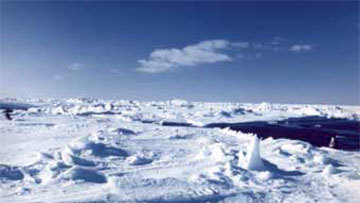


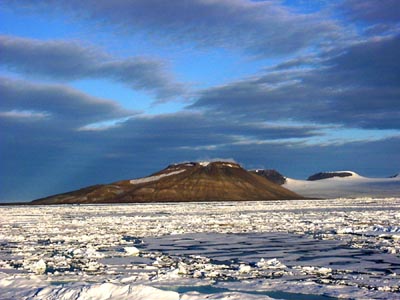

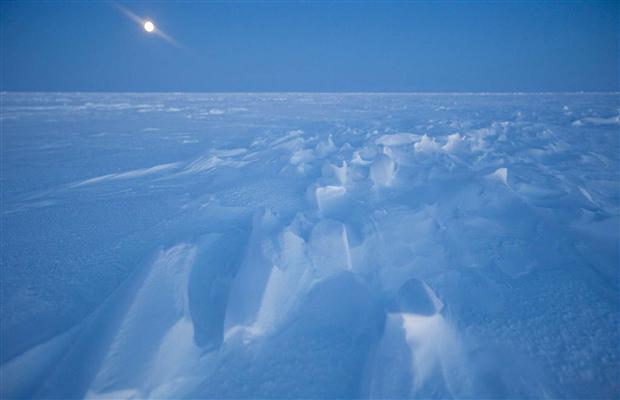 |
|---|
May 31, Canada has ‘more to lose than it realizes’: global warming report on Arctic
Canada's fabled Northwest Passage will not open up to shipping anytime soon, according to a study that warns global warming is a double-edged sword for northern transportation. “And Canada is going to be feeling the harsh edge of the sword more strongly than other Arctic states,” says Scott Stephenson, lead author of the study that forecasts that the Northwest Passage will be the last Arctic shipping route to become ice free.
It also predicts huge swaths of Canada’s landscape will become inaccessible by road by mid-century. |
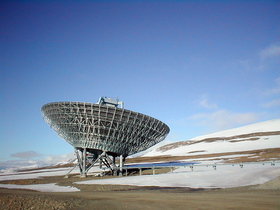 |
May 31, 4G network opened on Svalbard
The network was opened on Sunday in connection with Telenor’s 100 years anniversary on Svalbard. Telenor opened its first telegraph station in Svalbard in 1911, and now - after 100 years - Svalbard is probably among the world's most digitalized communities.
The world's northernmost 4G/LTE network was opened in in Longyearbyen by Telenor's chairman Harald Norvik and CEO Jon Fredrik Baksaas, Svalbardposten writes.
|
May 30, Ice melt to close off Arctic's interior riches: study
Global warming will likely open up coastal areas in the Arctic to development but close vast regions of the northern interior to forestry and mining by mid-century as ice and frozen soil under temporary winter roads melt, researchers said.
Higher temperatures have already led to lower summer sea ice levels in the Arctic and the melting has the potential to increase access for fishermen, tourists and oil and natural gas developers to coastal regions in coming decades. |
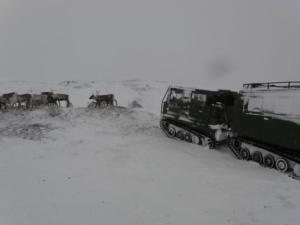 |
May 30, Reindeer See a Weird and Wonderful World of Ultraviolet Light
Researchers have discovered that the ultraviolet (UV) light that causes the temporary but painful condition of snow blindness in humans is life-saving for reindeer in the arctic.
|
May 27, Tourism in Arctic: attractive and accessible
The International Tourists Forum which is held in Arkhangelsk this week want to boost tourism in the Russian part of the Arctic.
For the first time, the Russian Agency of tourism development holds such meeting in the periphery. The main topic of the conference is the development of tourism in the northern territories of Russia and the importance of this agenda is proved by participation of over 400 experts, officials and travel agencies from seven countries and different regions of Russia. |
May 27, Canada, Russia Arctic tensions thaw
Russia and Canada aren't gearing up for a tussle over the North, a top envoy from the Kremlin said Wednesday.
"There are a lot of issues that can be dealt with on an international level," said Petr Plikhin, deputy chief of mission for the Russian embassy in Ottawa, who underscored the joint interests held by both countries, including sustainable economic development. "We are the biggest Arctic nations and we have a lot of common things to tackle." |
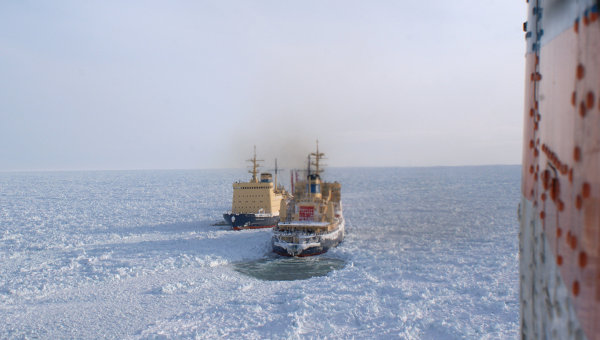 |
May 26, Valdai Club Supports Dialogue in the Arctic
A two day conference "Canada/Russia/Norway: Dialogue and Cooperation in the Arctic", is being held on May 26-27, 2011 at the Carleton University, Ottawa, Canada.
"The conference will bring together key people from the three countries who can talk about solutions to real-world problems facing the Arctic, such as ecology, transportation and business-related issues. We need to decide on how we can co-operate and move forward on these issues before resolving the issue of Arctic sovereignty," says Piotr Dutkiewicz, conference chair, Professor of Political Science at Carleton and Member of the Valdai Club Advisory Board. |
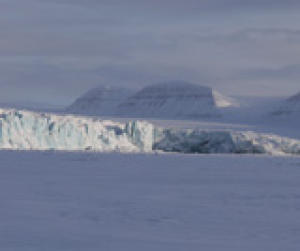 |
May 26, Melting Glaciers May Affect Ocean Currents
A team of scientists from the University of Sheffield and Bangor University have used a computer climate model to study how freshwater entering the oceans at the end of the penultimate Ice Age 140,000 years ago affected the parts of the ocean currents that control climate.
|
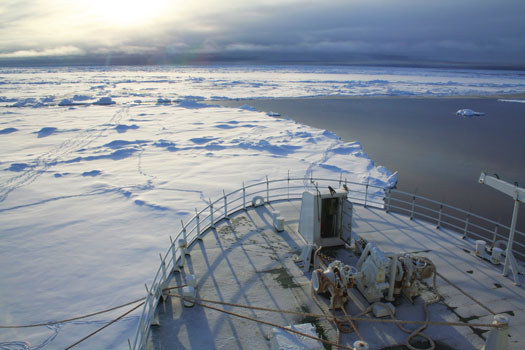 |
May 25, Sea spray icing
Sea spray icing is a dominant source of ice accumulation on ships and offshore installations and can be quite dangerous. PhD student Anton Kulyakhtin (24) from Russia performs field measurements in Longyearbyen which will be used for validation of a future 3D-model predicting ice accumulation on ships and floating structures.
|
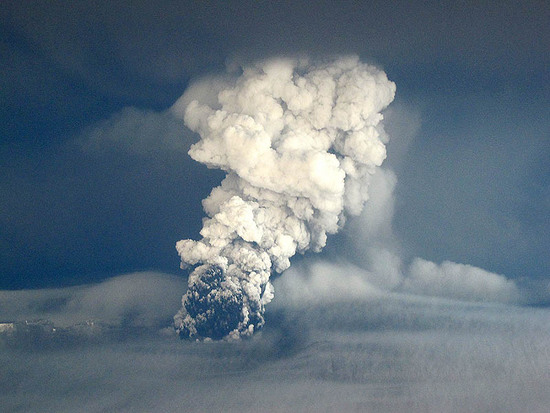 |
May 25, Grimsvotn halts flights to Svalbard, oil rigs
All Norwegian flights between mainland Norway and Svalbard are temporarily cancelled as ash from the Iceland's Grimsvotn volcano swept across the Norwegian area of the Barents Sea on Monday night. Russian flights are still operating in the area.
|
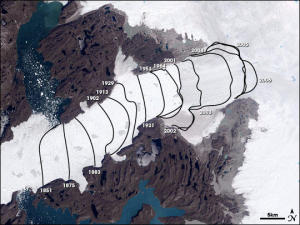 |
May 25, Two Greenland Glaciers Lose Enough Ice to Fill Lake Erie
A new study aimed at refining the way scientists measure ice loss in Greenland is providing a "high-definition picture" of climate-caused changes on the island.
|
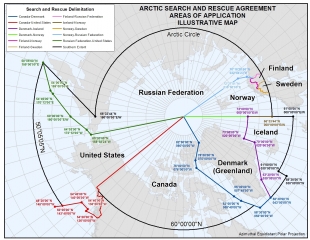 |
May 24, Arctic Search and Rescue Agreement
The first international agreement made exclusively for the Arctic region was signed at the ministerial meeting in Nuuk, May 12 2011. The agreement, which deals with search and rescue of aeronautical and maritime vessels and passengers, is also the first international agreement made under the auspices of the Arctic Council. The Arctic Council is now planning another international agreement for adoption which will deal with oil pollution in the Arctic.
|
May 24, Investigations of Changes in Weddell Sea Habitat: Research Ship Polarstern Returns from Antartica
The research vessel Polarstern of the Alfred Wegener Institute for Polar and Marine Research in the Helmholtz Association will arrive back at its homeport of Bremerhaven after a seven-month expedition on Friday, 20 May. Nearly 200 researchers from institutes in 15 countries took part in the expedition. The oceanographers on board conducted measurements showing that warming of the water in the deep Weddell Sea continues further. The observations of biologists indicated that organisms in the Antarctic adapt very slowly to changes in the environment.
|
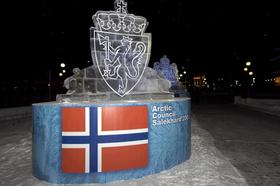 |
May 23, Arctic Council agrees on Tromso
Permanent secretariat will facilitate the council’s work.
Arctic Council Ministerial meeting in Nuuk decided that Tromso in Northern Norway will be the location for the work to coordinate the joint work for the eight Arctic States. |
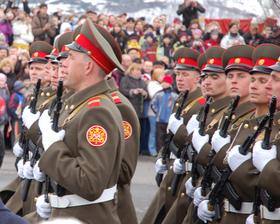 |
May 23, Russian Arctic brigade on border to Norway already in 2011
The planned Arctic special forces brigade on the border to Norway can be established already this year. A high-ranking officer has already inspected the premises.
|
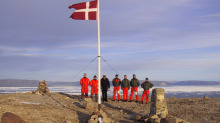 |
May 20, Denmark prepares to claim North Pole
Denmark will make an official claim to the North Pole, setting the stage for possible tug-of-war with Canada and Russia over the seabed at the top of the world, say reports from Copenhagen.
Citing a leaked draft 10-year Arctic strategy, which wasn’t supposed to be made public until next month, Danish media say the country plans to claim five sections of continental shelf: four around the Faeroe Islands and one off Greenland, which would include the pole. Both Greenland and the Faeroes are self-governing Danish territories. |
May 20, Leading article: The Arctic no place for oil companies
The collapse of BP's deal to explore the Arctic sea for oil is deeply humiliating for the giant oil corporation. It was only in January that BP, with a great fanfare, announced the deal with Rosneft, the Kremlin-backed Russian oil company. The tie-up was supposed to rebuild BP's reputation after the disaster of the Deepwater Horizon explosion in the Gulf of Mexico last year which has cost the company $41bn so far. That much-vaunted strategy is now in tatters.
|
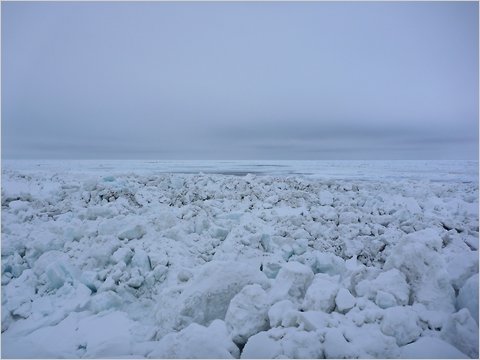 |
May 19, Under the Ice, Sounds of Spring
Kate Stafford, an oceanographer at the Applied Physics Laboratory at the University of Washington, writes from Alaska, where she is participating in a visual census of bowhead whales.
You can look across a vast expanse of ice, all white and blue and cold, and see nothing. The lead is choked with pack ice or sealed over with newly formed ice, and there is no movement or sound. With few birds, no whales and no bears, one might mistake the Arctic for a desert. But if you go down to the ice edge, pick a hole in the new ice deep enough to reach water and drop in a hydrophone (an underwater microphone), the cacophony is astonishing. |
May 19, Climate Change’s Ecological Impact on the Mackenzie Delta Region
A Canadian multidisciplinary research team has discovered new evidence of the destructive impact of global climate change on North America’s largest Arctic delta, the Mackenzie Delta in Canada’s Northwest Territorries.
The findings, which were presented in the journal Proceedings of the National Academy of Sciences, identifies rising sea levels as "one of the most ominous threats of global warming." The threat, the scientists say, is particularly acute in the Polar Regions, where shrinking sea ice increases the risk of storm surges. |
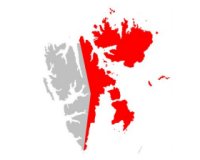 |
May 18, New management plan for East Svalbard - call for comments
The Governor of Svalbard has been working on a document presenting a new management plan for the Eastern Svalbard nature reserves recently. The document is now released for comments from all interested institutions.
Svalbard Science Forum has been involved in the process where several working groups representing different user groups were appointed. A result of their work is a document covering research ideas for future research in East Svalbard, overview of scientific installations and suggestions for management of the nature reserves, among other issues. |
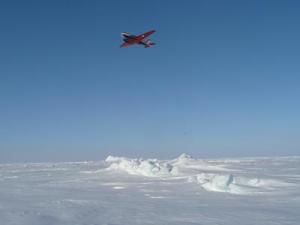 |
May 18, Research Aircraft Polar 5 Returned from Spring Measurements in the High Arctic
The research aircraft Polar 5 of the Alfred Wegener Institute for Polar and Marine Research in the Helmholtz Association returned to Bremerhaven from a six-week expedition in the high Arctic on May 6. Joint flights with aircraft of the European and American space agencies (ESA and NASA) were a novelty in sea ice research. Simultaneous measurements with a large number of sensors on three planes underneath the CryoSat-2 satellite led to unique data records. Furthermore, the international team composed of 25 scientists and engineers collected data on trace gases, aerosols and meteorological parameters that will be evaluated at the research institutes involved in the coming months.
|
May 17, New insights into life of benthic amphipods
Recently defended PhD work on benthic amphipods delivers new information about life and ecology of related species living in ice covered waters around Svalbard.
|
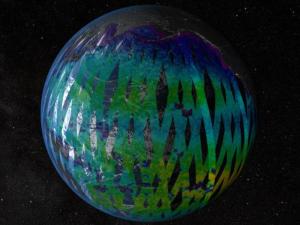 |
May 17, Aquarius to Illuminate Links Between Salt, Climate
When NASA's salt-seeking Aquarius instrument ascends to the heavens this June, the moon above its launch site at California's Vandenberg Air Force Base won't be in the seventh house, and Jupiter's latest alignment with Mars will be weeks in the past, in contrast to the lyrics of the song from the popular Broadway musical "Hair." Yet for the science team eagerly awaiting Aquarius' ocean surface salinity data, the dawning of NASA's "Age of Aquarius" promises revelations on how salinity is linked to Earth's water cycle, ocean circulation and climate.
|
 |
May 16, RALSTON: From sea to shining sea to Arctic Ocean
Old-school thinking sees America as a nation bounded by two great oceans. Yet the world has changed. The Arctic Ocean is no longer optional. In fact, it has become our nation’s third great ocean border - and the opportunity of a lifetime.
Secretary of State Hillary Rodham Clinton’s recent visit to Greenland on May 12 confirmed that realization. She became the first U.S. secretary of state to attend the Arctic Council. |
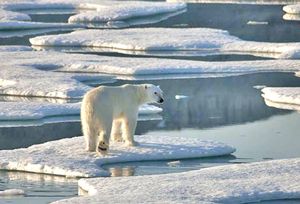 |
May 16, Revealed: the secret battle for the riches of the Arctic
Leaked cables show how nations are carving up pristine wilderness.
As the eight Arctic nations met in Greenland yesterday, cables released by WikiLeaks gave insight into the battle for control of the world's least explored region and the resources that lie beneath its icy waters. |
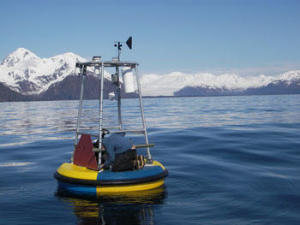 |
May 13, First Ocean Acidification Buoy Installed in Alaska Waters
A new set of buoys in Alaska waters will help scientists understand how climate change may be affecting the pH level of northern seas. Researchers placed the first buoy last month.
|
May 13, Mapmaking center goes bipolar
Researchers in Alaska, Siberia and Greenland can now look to the Polar Geospatial Center to find their way around.
The U.S.-funded center, which operates the McMurdo station in Antarctica every summer, is expanding its logistics services to the Arctic.
The center's researchers have been mapping Antarctica using satellite images and on-the-ground surveys since 2007. With funding from the National Science Foundation, they have also worked with Google Earth and Google Maps to update data on the Arctic and Antarctic. |
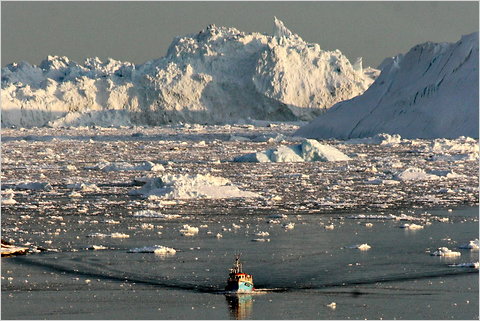 |
May 13, Hillary Clinton Takes Seat at Arctic Council
Officials of the eight Arctic nations are taking their first concrete step to cooperate in an ecologically fragile region where climate change is driving economic competition.
Members of the Arctic Council — the United States, Russia, Canada, Iceland, Denmark, Norway, Finland and Sweden — plan to sign an agreement on Thursday to coordinate search-and-rescue operations across 13 million square miles of ocean that are becoming more navigable as Arctic sea ice decreases. In a sign of the council’s new prominence in American foreign policy, Hillary Rodham Clinton is the first secretary of state to attend one of its biannual meetings. |
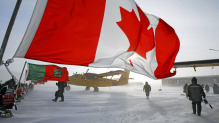 |
May 12, Arctic treaty leaves much undecided
Canada, Russia, the United States and their smaller circumpolar neighbours have agreed how to divvy up the fast-warming and fragile Arctic, but only for search-and-rescue responsibilities, leaving aside the vexed issues of sovereignty, oil drilling, pollution and shipping.
The search-and-rescue treaty, to be signed Thursday, is the first significant achievement of the eight-nation Arctic Council, and was hailed as evidence that the Arctic nations are committed to working together, although that co-operation will be tested in settling overlapping claims. |
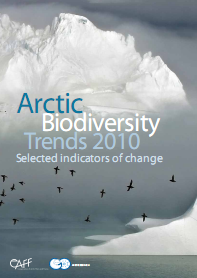 |
May 12, Rapid Changes for Arctic Flora and Fauna
Unique Arctic habitats for flora and fauna, including sea ice, tundra, lakes, and peatlands have been disappearing over recent decades, and some characteristic Arctic species have shown a decline. The changes in Arctic Biodiversity have global repercussions and are further creating challenges for people living in the Arctic.
|
May 11, Arctic Nations Eye Future of World's Last Frontier
Leaders of Arctic nations gather in Greenland this week to chart future cooperation as global warming sets off a race for oil, mineral, fishing and shipping opportunities in the world's fragile final frontier.
Secretary of State Hillary Clinton will join foreign ministers from seven other Arctic states in Greenland's tiny capital of Nuuk -- population 15,000 -- on Thursday for an Arctic Council meeting on the next steps for a region where warming temperatures are creating huge new challenges and unlocking untapped resources. |
May 11, New Study Highlights Wide-Ranging Impacts of Climate Change in Arctic
With the most recent five-year period having been the warmest since 1880 when monitoring began, climate change is predicted to bring a wide range of impacts to the Arctic, according to a new report entitled Snow, Water, Ice, Permafrost in the Arctic (SWIPA). The report was coordinated by the Arctic Monitoring and Assessment Programme (AMAP) and produced in collaboration with the International Arctic Science Committee (IASC), the World Meteorological Organization (WMO), the Climate and Cryosphere program (CliC) and the International Arctic Social Sciences Association (IASSA).
|
May 10, An Enigmatic Problem in Marine Ecology Uncovered
A new research paper from an international and interdisciplinary team, published in the journal Ecography, has uncovered the mystery behind the relationship between the duration of the open water period and the geographic coverage of marine species.
|
May 10, Monitoring of polar bear dens continues
Less polar bear dens and fewer encounters with polar bears than in 2009 were conclusions from 2011 monitoring fieldwork on Kongsoya.
Oystein Overrein from the Norwegian Polar Institute and Tommy Sandal have spent 4 weeks in March - April 2011 on the western side of Kongsoya carrying out monitoring fieldwork for polar bear scientists. The same monitoring was done 2 years ago. The aim was to: - check how visible the dens are over time - how many dens are in this part of Svalbard - number of polar bear females in productive age and number of born cubs - sampling dens for hair and excrement from the dens |
May 6, Small planes following black carbon pathways
Small unmanned planes operated by NORUT are used in the spring campaign in Svalbard right now. They are to map the melting of snow and ice caused by black carbon transported to Svalbard over long distances.
Black carbon is transported to Arctic by wind and precipitation even from remote locations in industrialised parts of the world. The UAVs are equipped with spectrometer so they are able to send light down to the surface and measure the amount of light reflected. Size of particles can also be measured. The drones measure meteorological parameters like temperature, humidity and air pressure. This is an operational part of the project called: variability of Albedo Using and Unmanned Aerial Vehicle (VAUUAV). |
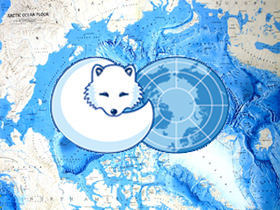 |
May 6, Rubles for the Arctic Council
Russia allocates ?10 million to the Arctic Council over the next two years.
The Russian Government will today discuss the question of concluding a treaty between Russia and the Nordic Environment Finance Corporation (NEFCO) on participation in the Arctic Council’s Project Support Instrument (PSI). |
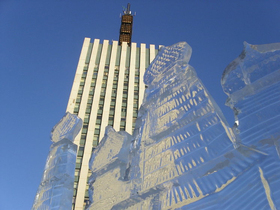 |
May 5, Arkhangelsk to host II International Arctic Forum
Navigation in the Arctic and development of the Northern Sea Route are the main themes for discussion when 500 Russian and foreign scientists, politicians and businesspeople gather in Arkhangelsk in September for the second International Arctic Forum.
|
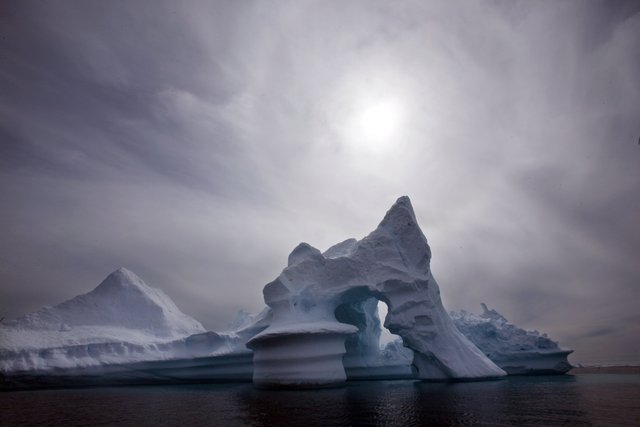 |
May 5, New report confirms Arctic melt accelerating
Arctic ice is melting faster than expected and could raise the average global sea level by as much as five feet this century, an authoritative new report suggests.
The study by the international Arctic Monitoring and Assessment Program, or AMAP, is one of the most comprehensive updates on climate change in the Arctic, and builds on a similar. The full report will be delivered to foreign ministers of the eight Arctic nations next week, but an executive summary including the key findings was obtained by The Associated Press on Tuesday. |
May 4, Scientific blogging - follow research activities as they happen
Blogging has become one of the modern tools to communicate science as it is happening, directly from the research tents in the field or various research vessels. Read about current activities on SSF blog section.
There are several research groups in various placesin and around Svalbard right now. High season started for many Arctic scientists several weeks ago. Many of them tell stories from field through blogging. Right now you can follow scientist on one of the Svalbard largest ice caps - Austfonna where land-based callibration part of the ESA CryoSat mission takes place. |
May 4, What Lies Beneath the Seafloor? Results from First Microbial Subsurface Observatory Experiment
An international team of scientists report on the first observatory experiment to study the dynamic microbial life of an ever-changing environment inside Earth's crust. University of Miami (UM) Rosenstiel School of Marine and Atmospheric Science professor Keir Becker contributed the deep-sea technology required to make long-term scientific observations of life beneath the seafloor.
|
May 3, Beyond Predictions: Biodiversity Conservation in a Changing Climate
Climate change is predicted to become a major threat to biodiversity in the 21st century, but accurate predictions and effective solutions have proved difficult to formulate. Alarming predictions have come from a rather narrow methodological base, but a new, integrated science of climate-change biodiversity assessment is emerging, based on multiple sources and approaches. Drawing on evidence from paleoecological observations, recent phenological and microevolutionary responses, experiments, and computational models, we review the insights that different approaches bring to anticipating and managing the biodiversity consequences of climate change, including the extent of species’ natural resilience.
|
May 3, Minor Cause, Major Effect: Interactions in Ecosystems Can Intensify Impact of Climate Change
In a new study, marine biologists from the Leibniz Institute of Marine Sciences (IFM-GEOMAR), together with colleagues from six other countries, show that highly complex interactions in ecosystems can intensify the impact of climate change within a relatively short period of time.
|
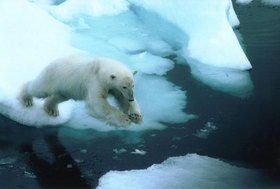 |
April 29, On thin ice: 13 vulnerable Arctic areas
A new report identifies 13 vulnerable Arctic places as ice melts and industry moves in.
A report released yesterday by the Natural Resources Defense Council (NRDC) and the International Union for Conservation of Nature idenitifies several Arctic areas that are especially vulnerable as summer ice melts and industrial activity expands into newly accessible areas.
|
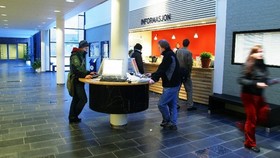 |
April 29, Students rushing to northern universities
Universities and colleges in Northern Norway have never had as many applicants as now. Subjects concerning the High North are popular.
The University of Tromso has 3,3 percent more applicants to this year’s intake compared to last year. Also the newly established University of Nordland in Bodo has many applicants. |
April 28,Vacant Positions at UNIS
The University Centre on Svalbard (UNIS) is a state-owned limited company and has about 350 students annually.
There are about 40 persons on the scientific staff and 25 persons on the technical/administrative staff. In addition there are 24 adjunct professors and about 160 guest lecturers annually. UNIS has four main disciplines: Arctic Biology, Arctic Geology, Arctic Geophysics and Arctic Technology. |
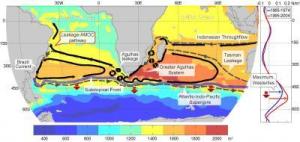 |
April 28, Agulhas Ocean Current 'Leakage', Fueled by Global Warming, Could Stabilize Atlantic Overturning Circulation
The Agulhas Current which runs along the east coast of Africa may not be as well known as its counterpart in the Atlantic, the Gulf Stream, but researchers are now taking a much closer look at this current and its "leakage" from the Indian Ocean into the Atlantic Ocean. In a study published in the journal Nature, April 27, a global team of scientists led by University of Miami (UM) Rosenstiel School of Marine & Atmospheric Science Associate Professor Lisa Beal, suggests that Agulhas leakage could be a significant player in global climate variability.
|
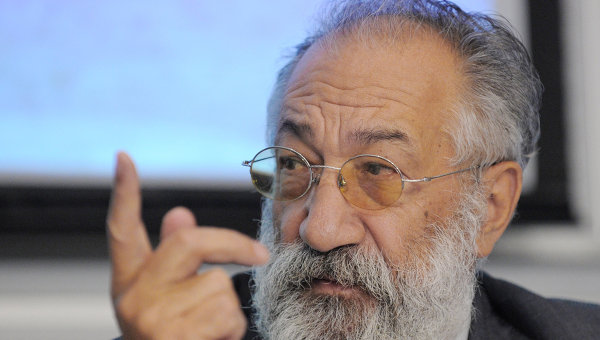 |
April 27, Russia to create scientific center on Svalbard - Chilingarov
Russia will create a scientific center in Barentsburg in the Svalbard Archipelago, polar explorer parliament member Artur Chilingarov said on Tuesday.
"A decision is being discussed on building a Russian research center on the base of the existing observatory," Chilingarov said. "This will be in Barentsburg," he continued adding that the construction may begin next year. |
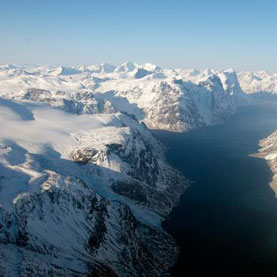 |
April 27, Ice Cores from Greenland Unlock Ancient Climate Secret
Climate science research often involves a little derring-do mixed in with a lot of tedium. Some scientists scramble up equatorial peaks to measure melting glaciers; others scour dry African lakebeds for sediment that reads like a talking science book.
For paleoclimatologist James White, adventures begin when a C-130 transport plane drops him and his team in the middle of Greenland's ice cap.
|
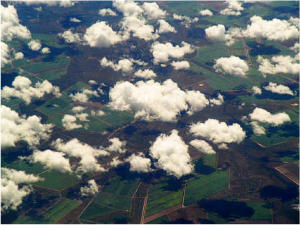 |
April 26, Effect of Cloud-Scattered Sunlight on Earth's Energy Balance Depends on Wavelength of Light
Atmospheric scientists trying to pin down how clouds curb the amount of sunlight available to warm Earth have found that it depends on the wavelength of sunlight being measured. This unexpected result will help researchers improve how they portray clouds in climate models.
|
April 26, International Trade May Offset Reported Carbon Emission Reductions
An increasing share of global emissions is from the production of internationally traded goods and services, according to a new study published in the Proceedings of the National Academy of Sciences. Due to current reporting practices, this has allowed some countries to increase their carbon footprints while reporting stabilized emissions.
|
April 25, Democrats and Republicans Increasingly Divided Over Global Warming, Study Finds
Despite the growing scientific consensus that global warming is real, Americans have become increasingly polarized on the environmental issue, according to a first-of-its-kind study led by a Michigan State University researcher.
The gap between Democrats and Republicans who believe global warming is happening increased 30 percent between 2001 and 2010 -- a "depressing" trend that's essentially keeping meaningful national energy policies from being considered, argues sociologist Aaron M. McCright.
|
April 25, IPY Joint Committee Summary
The International Polar Year (IPY) 2007–2008, co-sponsored by ICSU and WMO, became the largest coordinated research program in the Earth’s polar regions, following in the footsteps of its predecessor, the first and second International Polar Years in 1881-1883 and 1932-1933 and the International Geophysical Year 1957–1958.
An estimated 50,000 researchers, local observers, educators, students, and support personnel from more than 60 nations were involved in the 228 international IPY projects (170 in science, 1 in data management, and 57 in education and outreach) and related national efforts. IPY generated intensive research and observations in the Arctic and Antarctica over a two-year period, 1 March 2007–1 March 2009, with many activities continuing beyond that date. |
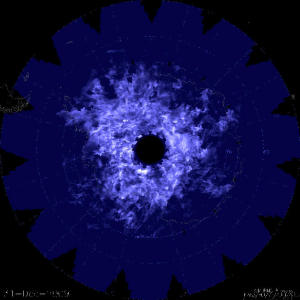 |
April 22, Clouds, Clouds, Burning Bright
High up in the sky near the poles some 50 miles above the ground, silvery blue clouds sometimes appear, shining brightly in the night. First noticed in 1885, these clouds are known as noctilucent, or "night shining," clouds. Their discovery spawned over a century of research into what conditions causes them to form and vary -- questions that still tantalize scientists to this day. Since 2007, a NASA mission called Aeronomy of Ice in the Mesosphere (AIM) has shown that the cloud formation is changing year to year, a process they believe is intimately tied to the weather and climate of the whole globe.
|
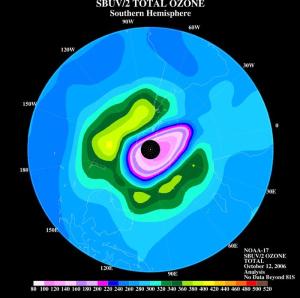 |
April 22, Ozone Hole Linked to Climate Change All the Way to the Equator
In a study to be published in the April 21st issue of Science, researchers at Columbia University's School of Engineering and Applied Science report their findings that the ozone hole, which is located over the South Pole, has affected the entire circulation of the Southern Hemisphere all the way to the equator. While previous work has shown that the ozone hole is changing the atmospheric flow in the high latitudes, the new Columbia Engineering paper demonstrates that the ozone hole is able to influence the tropical circulation and increase rainfall at low latitudes in the Southern Hemisphere.
|
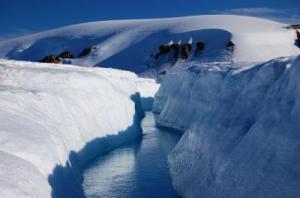 |
April 21, Melting Ice on Arctic Islands a Major Player in Sea Level Rise
Melting glaciers and ice caps on Canadian Arctic islands play a much greater role in sea level rise than scientists previously thought, according to a new study led by a University of Michigan researcher.
|
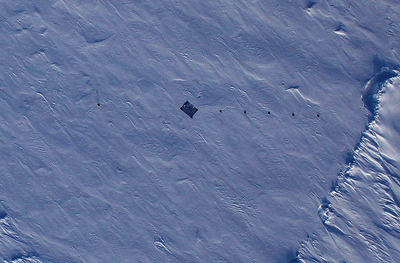 |
April 21, ESA-NASA collaboration furthers sea-ice research
In support of ESA's CryoSat ice mission, which was launched a year ago to monitor changes in ice thickness, a gruelling validation campaign is being carried out in one of the most inhospitable environments on Earth.
The one-month Arctic expedition is a major undertaking, with scientific teams from numerous organisations braving temperatures of -30C in central Greenland, Svalbard and the Fram Strait, Devon Island and offshore from Alert, Ellesmere Island, in northern Canada. |
April 20, Glacier calving provides scientists with huge natural experiment
Sea stars as big as hubcaps, colourful sponges and feathery sea pens have been revealed after nearly 80 years in dark Antarctic waters.
In January last year a 78 kilometre piece of the Mertz Glacier tongue in East Antarctica broke off, exposing a section of the Southern Ocean previously covered in hundreds of metres of ice and providing scientists with a once-in-a-life-time opportunity to test theories of how the ecosystem might respond to such large-scale changes. |
April 20, Scientists want climate change early-warning system
A better monitoring network for greenhouses gases is needed to warn of significant changes and to keep countries that have agreed to cut their emissions honest, scientists said in papers published Monday.
"What we're hoping to do is see if the warming is feeding the warming, particularly in the Arctic," said Euan Nisbet, a specialist in methane emissions at the University of London. |
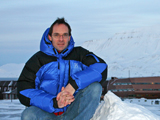 |
April 19, Jan-Gunnar Winther continues as director of the Norwegian Polar Institute
Today, Director Jan-Gunnar Winther was appointed by the King in Council to his second term of 6 years as director of the Norwegian Polar Institute.
Winther is a civil engineer from NTNU in 1987 and received his Ph.D. (doctoral) from the same place in 1993. Jan-Gunnar Winther (48 years) has in the past six years been the director of the Norwegian Polar Institute. |
April 19, New international report on the state of the circumpolar Arctic coast
New international report on the state of the circumpolar Arctic coast: State of the Arctic Coast 2010 – Scientific Review and Outlook.
The coast is a key interface in the Arctic environment. It is a locus of human activity, a rich band of biodiversity, critical habitat, and high productivity, and among the most dynamic components of the circumpolar landscape. The Arctic coastal interface is a sensitive and important zone of interaction between land and sea, a region that provides essential ecosystem services and supports indigenous human lifestyles; a zone of expanding infrastructure investment and growing security concerns; and an area in which climate warming is expected to trigger landscape instability, rapid responses to change, and increased hazard exposure. |
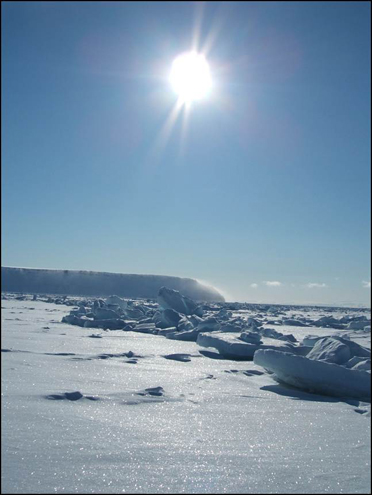 |
April 18, Call for Papers - Advances in meteorology: special issue for Svalbard
Rapid development of various observational platforms in meteorology, increased number of ship-based observations and ice-camps in Svalbard in the recent years led to a special issue on Svalbard meteorology. This is Call for Papers to be submitted.
|
April 18, New director at Kings Bay AS
Kings Bay AS has appointed a new director to replace Roger Jakobsen. Ole Oiseth is currently employed at the Norwegian military forces. He has background in administration and human resources.
Lieutenant Colonel Staff Officer Land Ole Oiseth has a background from the Norwegian Army with focus on administration and human resources. Several years of international experience working with multinational staff, at NATO and UN missions. He was working with East African Brigade as administrative advisor in 2007-2009. Aftterwards he was appointed the station commander at Jan Mayen. |
April 18, Miniature Sensors to Measure the Ocean
The first miniature sensors designed to measure saltiness and temperature across the world's oceans are being put in use on an ambitious expedition.
A four-man team of officers from Swanton Morley, UK were to set off to row 3,100 miles from Australia to Mauritius on April 17, 2011. |
 |
April 18, Svalbard's Environmental Protection Fund distributes 3,7 mln this spring
Svalbard's Environmental Protection Fund has distributed over 3,7 mln NOK to 19 projects out of 52 applying for support. The largest amount goes to Store Norske for establishing the Gruve 3 Museum.
This time the leadership of the Fund has chosen to focus on fewer but more specific projects with high relevance to the environmental protection and preservation of cultural heritage. |
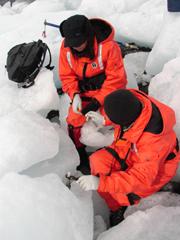 |
April 15, Antarctic microbes live life to the extreme
You might not expect bacteria living in Antarctic ice to be well suited to life in a boiling kettle, but that is what Chilean scientists discovered during an expedition last year. The researchers have turned up more than 200 new species of microorganisms adapted to living in extreme environments.
|
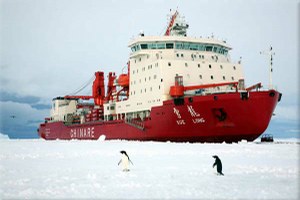 |
April 15, Chinese Icebreaker to reach Iceland over the Arctic
The Chinese government plan to send an icebreaker over the Arctic to ship in Iceland this summer. The ship will sail the North-East Passage to Iceland and the North-West Passage back. This would be the first time a ship would go through the Arctic from the Pacific Ocean to Iceland and back again in one summer.
The first idea of the expedition was discussed at visit from Chinese officials to the Icelandic president last autumn. |
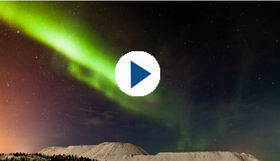 |
April 15, Pasvik northern lights seen by 10 million people
More than 10 million people all over the world has seen this stunning video of the Aurora Borealis over Pasvik in Finnmark, Norway.
|
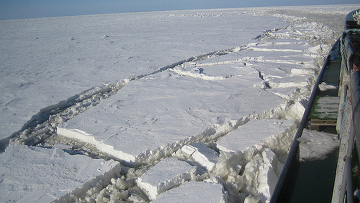 |
April 14, The new Arctic: trade, science, politics
The opening of the Arctic to ship-passage will transform the region’s political as well as environmental landscape, says Oyvind Paasche.
Soon ships will be able to sail across an open Arctic Ocean during the summer months. The low humming of freight vessels will be a regular sound. The reduced presence of massive multi-year sea-ice is rapidly becoming a reality as the thicker and older ice is being exported from the region. |
 |
April 14, Death -- Not Just Life -- Important Link in Marine Ecosystems
Tiny crustaceans called copepods rule the world, at least when it comes to oceans and estuaries. The most numerous multi-cellular organisms in the seas, copepods are an important link between phytoplankton and fish in marine food webs.
|
April 13, UNIS offers courses at the undergraduate and graduate level in four fields
UNIS offers courses at the undergraduate and graduate level in four fields: Arctic Biology (AB), Arctic Geology (AG), Arctic Geophysics (AGF) and Arctic Technology (AT).
Full semester studies are available at the undergraduate level (200-level). At the graduate level (300-level) UNIS offers shorter and more intensive courses spanning from a few weeks up to a semester. Read more about the course levels further down the page. |
April 13, Natural Gas from Shale Contributes to Global Warming, Researchers Find
Natural gas extracted from shale formations has a greater greenhouse gas footprint -- in the form of methane emissions -- than conventional gas, oil and coal over a 20 year period. This calls into question the logic of its use as a climate-friendly alternative to fossil fuels, according to Robert Howarth and colleagues, from Cornell University in New York.
|
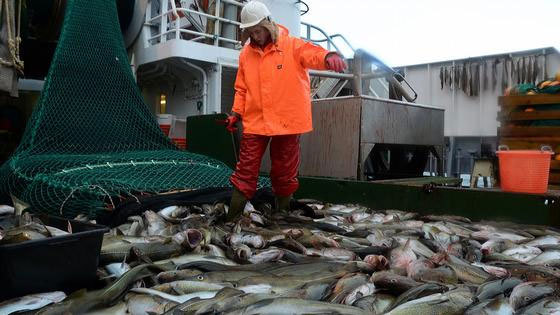 |
April 12, Lofoten brimming with spawning cod
Never before has the Institute of Marine Research seen more spawning cod than this spring. Trawlers in the Barents Sea also reports amazing amount of cod.
The annual research mission in the Lofoten area in Northern Norway with the vessel “Johan Hjort” has surprised the marine researchers. - We have never before seen such amount of cod, says expedition leader with the Marine Research Institute Erik Berg. |
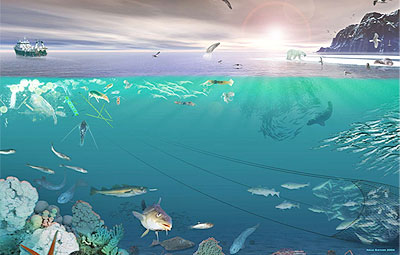 |
April 12, Joint Norwegian-Russian environmental status 2008. Report on the Barents Sea Ecosystem
The main objective of the report is to give a comprehensive description of the Barents Sea ecosystem, including human activities and impact in the area, using relevant scientific and monitoring knowledge from Norwegian, Russian and other sources. The report will contribute to the knowledge basis for development of an ecosystem based management plan for the Russian part of the Barents Sea and contribute to further development of the ecosystem based management plan for the Norwegian part of the Barents Sea.
|
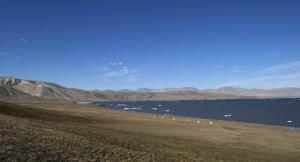 |
April 11, Ancient Fossils Hold Clues for Predicting Future Climate Change
By studying fossilized mollusks from some 3.5 million years ago, UCLA geoscientists and colleagues have been able to construct an ancient climate record that holds clues about the long-term effects of Earth's current levels of atmospheric carbon dioxide, a key contributor to global climate change.
|
April 11, West Antarctic Warming Triggered by Warmer Sea Surface in Tropical Pacific
The Antarctic Peninsula has warmed rapidly for the last half-century or more, and recent studies have shown that an adjacent area, continental West Antarctica, has steadily warmed for at least 30 years, but scientists haven't been sure why.
|
April 8, Gulf Stream could be threatened by Arctic flush
Rapid warming in the Arctic is creating a new and fast-growing pool of fresh water in the Arctic Ocean. Measuring at least 7500 cubic kilometres, it could flush into the Atlantic Ocean and slow the Gulf Stream, bringing colder winters to Europe.
The water is mostly coming from melting permafrost and rising rainfall, which is increasing flows in Siberian rivers that drain into the Arctic, such as the Ob and Yenisei. More comes from melting sea ice, says Laura de Steur of the Royal Netherlands Institute of Sea Research in 't Horntje, who is tracking the build-up. Salinity anomalies like this are a regular feature of the Arctic. The last major event occurred in the 1960s. They happen when strong winds circling the Arctic restrict southward water movement. Eventually, the winds falter and the water flushes into the Atlantic through the Fram strait, between Greenland and Europe. |
 |
April 8, IPY Montreal 2012 Career Development Workshop
The IPY 2012 From Knowledge to Action Conference is the final event of International Polar Year 2007 - 2008, the largest international program of interdisciplinary polar research ever undertaken. This conference will provide an opportunity to apply and disseminate the knowledge and scientific results from IPY from around the world and focus on next steps. Participants will consider ways to translate those new understandings into policy that will guide activities in and enhance stewardship of the polar regions.
|
April 7, Norwegian Polar Institute's annual report for 2010
The annual report addresses the the Institute activities, financial statements and publications of 2010. It includes articles about climate change in the Norwegian Arctic, the update of the management plan for the Barents Sea and areas off the Lofoten Islands, logistics in Antarctica, and sea birds and the new Norwegian Red List.
|
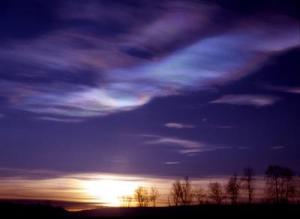 |
April 6, Record Depletion of Arctic Ozone Layer Causing Increased UV Radiation in Scandinavia
Over the past few days ozone-depleted air masses extended from the north pole to southern Scandinavia leading to higher than normal levels of ultraviolet (UV) radiation during sunny days in southern Finland. These air masses will move east over the next few days, covering parts of Russia and perhaps extend as far south as the Chinese/Russian border. Such excursions of ozone-depleted air may also occur over Central Europe and could reach as far south as the Mediterranean.
|
April 6, 1000 years of winter temperatures reconstructed from Svalbard ice cores
Two isotopic ice core records from western Svalbard were used to reconstruct approximately 1000 years of past winter surface air temperature variations in Longyearbyen, Svalbard and Vardo, northern Norway.
Relative shortness and scarcity of instrumental records in the high Arctic call for use of climate proxies like ice cores to reconstruct climate changes in the past. |
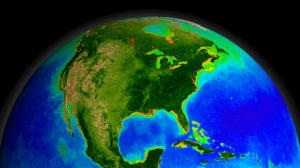 |
April 5, SeaWiFS' 13 Years of Observing Our Home Planet
Mary Cleave left the NASA astronaut corps in the early 1990s to make a rare jump from human spaceflight to Earth science. She was going to work on an upcoming mission to measure gradations in ocean color -- something she had actually seen from low-Earth orbit with her own eyes. From space, differing densities of phytoplankton and algae and floating bits of plant life reveal themselves as so many blues and greens. For Cleave, a former environmental engineer, the attraction was simple.
|
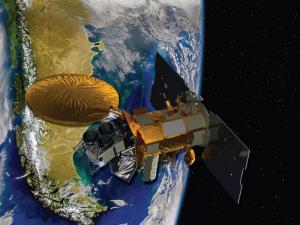 |
April 5, Salt-Seeking Spacecraft Arrives at Launch Site; NASA Instrument Will Measure Ocean Surface Salinity
An international spacecraft that will take NASA's first space-based measurements of ocean surface salinity has arrived at its launch site at Vandenberg Air Force Base in California. The Aquarius/SAC-D mission will provide scientists with a key missing variable in satellite observations of Earth that links ocean circulation, the global balance of freshwater and climate.
|
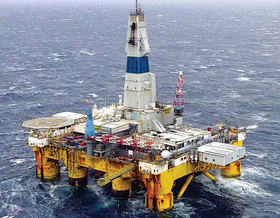 |
April 4, Finally large Barents oil discovery
Statoil says the discovery is a breakthrough in the Barents Sea and one of the most important events on the Norwegian continental shelf in the last ten years.
After several dry wells over the last three decades, a significant oil discovery 200 kilometres north of the coast of Finnmark was announced by Statoil on Friday. And this is no April 1st joke. |
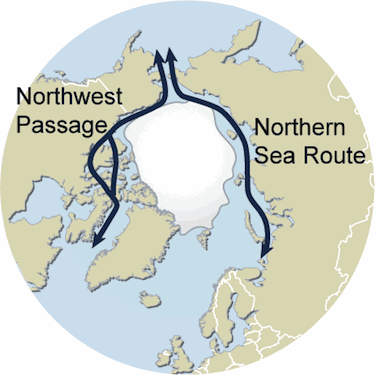 |
April 4, More Arctic shipping ups need for safety, environmental protection: top Russian official
After more than a year of negotiations, an Arctic Council task force, co-chaired by Russia and the United States, delivered an agreement in January on cooperation on air and sea search and rescue in the Arctic.
That agreement assigns legal areas of responsibility to each of the council’s eight-member nations and lays out how they will work together in the event of an Arctic emergency. |
April 1, Scholarships for selected UNIS courses
Ph.D. students can apply for scholarships to attend some of the UNIS postgraduate courses in biology and geology this summer through the BioCold network. The application deadline for the UNIS courses is 15. April, and the application deadline for BioCold scholarship is 15. May.
|
April 1, Norwegian-Russian workshop on invertebrates
Research on invertebrates (insects, worms, and other species without backbones) is a relatively young science in Svalbard. In the archipelago there are over 1,100 invertebrate species – but our knowledge of them is limited. UNIS is now arranging a Norwegian-Russian workshop in order to strengthen collaboration and expand our knowledge of these creepy-crawlies.
|
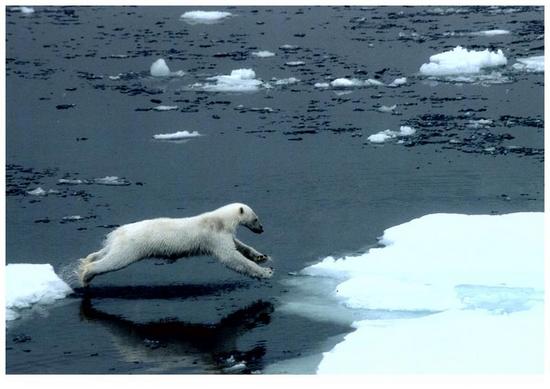 |
March 30, Longer jump for the Polar bear
The maximum extent of Arctic sea ice before melting season starts is at its lowest ever measured by satellites. Without ice the Polar bear hardly survives.
Scientists at the University of Colorado have followed the extent of the Arctic ice cap with satellites since 1979. Never before has the maximum winter extent of the sea ice been smaller than March 2011, according to the findings published at the portal of the National Snow and Ice Data Centre. |
March 29, Ocean Circulation Plays Important Role in Transporting Heat to Greenland Glaciers
Warmer air is only part of the story when it comes to Greenland's rapidly melting ice sheet. New research by scientists at Woods Hole Oceanographic Institution (WHOI) highlights the role ocean circulation plays in transporting heat to glaciers.
|
March 29, Sea Ice Holds Deep Secrets
Research scientist S?nke Maus has used funding under the Research Council's Programme on Synchrotron Research (SYNKROTRON) to develop a method of taking samples from polar ice without altering its extremely fragile microstructure. He has also laid the foundation for determining how molecular structure affects the mechanical properties of ice. This knowledge is vital for predicting the impact of ice on future activities in the Arctic Ocean.
|
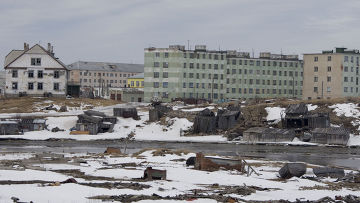 |
March 28, Norway hails Barents treaty OK by Russian Duma
Norway welcomed a Russian State Duma vote ratifying a treaty to divide the Barents Sea into clear Norwegian and Russian zones, bringing Norway closer to a new oil and gas drive in the Arctic.
"The action in the Duma is gratifying, and is a big step toward implementing the agreement," Norwegian Ministry of Foreign Affairs spokesman Kjetil Elsebutangen said on Saturday, a day after Russia's lower house of parliament ratied the deal. |
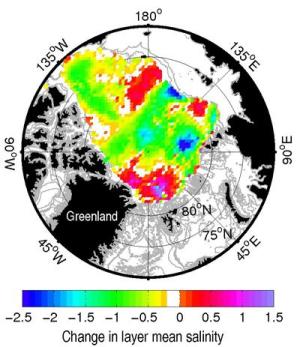 |
March 28, Freshwater Content of Upper Arctic Ocean Increased 20 Percent Since 1990s, Large-Scale Assessment Finds
The freshwater content of the upper Arctic Ocean has increased by about 20 percent since the 1990s, according to a new large-scale assessment. This corresponds to a rise of approximately 8,400 cubic kilometres and has the same magnitude as the volume of freshwater annually exported on average from this marine region in liquid or frozen form.
|
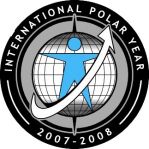 |
March 25, IPY Outreach Catalogue Available for Review
To all those interested in Education, Outreach and Communication during the latest International Polar Year!
Since the close of the International Polar Year (IPY) in the June 2010, the IPY Education, Outreach and Communication (EOC) Assessment Project has been working to collect information on Education, Outreach and Communication projects that occurred during the 2007-2009 International Polar Year.
|
 |
March 25, New Education Website Available
The Ice Drilling Program Office (IDPO) announces the launch of its new education-focused website, entitled IDPO Climate Expeditions (ICE). The site offers ice core-related lesson plans and resources for middle and high school classrooms; career profiles and links to universities with glaciology research centers for students; and informational articles, reliable resources, and multi-media for the public. To access this website, please go to: http://www.climate-expeditions.org.
|
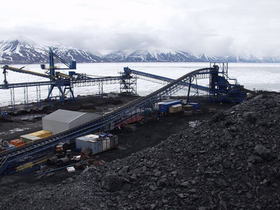 |
March 24, Svalbard coal on fire
Fire discovered in an 80,000 tons pile of coal in Svea on Svalbard.
The fire in the pile near the harbour of Svea was discovered Tuesday morning, reports Svalbardposten. |
March 24, Coming event: workshop on Svalbard geology
SSF is organizing a workshop with focus on: "Environmental changes in Svalbard since the last glacial maximum - integrating marine and terrestrial records".
The workshop will take place at the Fram Centre, Tromso, Norway, 27-29 April 2011. |
March 23, Key Trends in Water Resources Research Uncovered
The report "Confronting the Global Water Crisis through Research - 2010," carried out by Elsevier and released March 22, reveals the increasingly international and strategic nature of water resources research. Examining major trends in water research at the international, national and institutional levels, the report highlights the escalation in the article output of countries conducting water resources research and the expansion of such research into strategic disciplines. Elsevier used Scopus data and one of the solutions from its performance and planning suite, SciVal Spotlight, to develop a detailed analysis of country and institutional strengths in the field.
|
March 23,Concluding document on atmospheric research in Ny-Alesund published
Based on a workshop arranged by SSF in November 2008, this brief report defines core elements of the Atmosphere Research Flagship programme in Ny-Alesund.
The document summarizes the atmospheric research that has been undertaken in Ny-Alesund and discusses future research prioritities, as well as the establishment and further development of common research infrastructure. The Atmosphere Research Flagship programme is the second of several flagships aiming to strengthen international cooperation in Ny-Alesund. |
 |
March 22, Russian North Pole tour station to open in April
A Russian floating research station near the North Pole could open its doors for annual tourist trips by April 1, polar explorer Artur Chilingarov said on Monday.
The Barneo research station, just 150 km from the North Pole, has been in operation for 10 years. It converted into a touring base for about a month each year. |
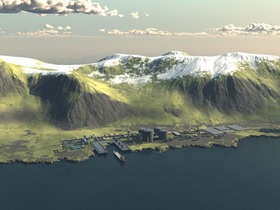 |
March 22, Jan Mayen worries eco watchdog
The Norwegian Climate and Pollution Authority fears oil drilling in the waters around the Arctic island of Jan Mayen.
The environmental watchdog fears that drilling in the area will affect the vulnerable Arctic nature. There are not sufficient preparedness facilities in the area, the authority writes in a press release. |
March 21, Learn more about UNIS and Svalbard
UNIS representatives will visit the Norwegian mainland universities over the next weeks to inform about our course portfolio, application process and answer questions about admission.
The University Centre in Svalbard (UNIS) offers courses at both the undergraduate (Bachelor) and graduate (Master/Ph.D.) level in Arctic biology, geology, geophysics and technology with a hands-on approach. All of our courses have a field component enabling our students to get an Arctic research experience. |
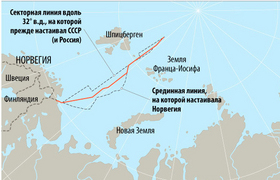 |
March 21, Recommends ratification of Barents Sea Treaty
A Russian ratification of the agreement with Norway on delimitation of the Barents Sea and the Arctic Ocean is one step closer to realization.
|
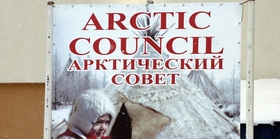 |
March 18, Arctic challenge for Arctic Council
Traditionally a forum for Arctic science and low-tension political questions, the Arctic Council plans to change as the Arctic itself is rapidly changing. Ministers meet in May.
Foreign Ministers representing the eight Arctic states will fly to Nuuk on Greenland on May 12th to form the future of Arctic politics and cooperation. All four Barents Region foreign ministers will be there. |
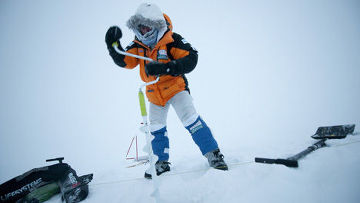 |
March 18, Berlin Enters the Scramble for the Arctic
As the Arctic ice melts, Germany wants to make sure its scientists gain unfettered access to the region. They have been hindered by the Russians, and other Arctic nations have been hesitant to cooperate. But Berlin also has its eyes on the bigger North Pole booty: natural resources and sea routes.
|
March 17, Northern Peatlands a Misunderstood Player in Climate Change
University of Alberta researchers have determined that the influence of northern peatlands on the prehistorical record of climate change has been over estimated, but the vast northern wetlands must still be watched closely as the planet grapples with its current global warming trend.
|
March 17, Destination: Arctic!
The Catlin Arctic Survey is a unique collaboration among polar explorers and scientists to gather data on the impacts of climate and environmental change in the Arctic.
This 10-week international scientific expedition will travel to the farthest reaches of the Arctic to research the impact of melting ice caps on the world's oceans and weather systems. In recent years, the surface area of Arctic ice has declined to levels that were not expected until 2070. |
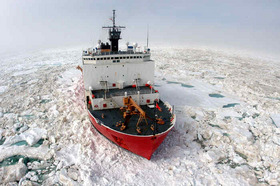 |
March 16, US navy warned to prepare for Arctic struggle as climate changes
America urgently needs to build up its military readiness in the Arctic where melting summer sea ice is setting up a global struggle for resources, a study prepared for the US navy has warned
The report by the National Academy of Sciences warned that climate change could upset the delicate security balance in the Arctic and that America is unprepared for the challenges ahead, the New York Times reports. |
March 16, Water for an Integrative Climate Paradigm
International climate negotiations are deadlocked between the affluent global North and "developing" South, between political Left and Right, and between believers and deniers. Now, authors writing in the latest issue of the International Journal of Water argue that a more integrative analysis of climate should help resolve these conflicts.
|
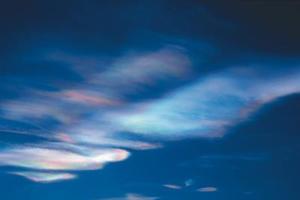 |
March 15, Arctic on the Verge of Record Ozone Loss
Unusually low temperatures in the Arctic ozone layer have recently initiated massive ozone depletion. The Arctic appears to be heading for a record loss of this trace gas that protects Earth's surface against ultraviolet radiation from the sun. This result has been found by measurements carried out by an international network of over 30 ozone sounding stations spread all over the Arctic and Subarctic and coordinated by the Potsdam Research Unit of the Alfred Wegener Institute for Polar and Marine Research in the Helmholtz Association (AWI) in Germany.
|
March 15, Natural resources in the Arctic
The territories, continental shelves and exclusive economic zones of eight countries exist within the Arctic: Russia (largest Arctic border), Canada, the United States (Alaska), Norway, Denmark (Greenland and the Faroe Islands), Finland, Sweden and Iceland.
|
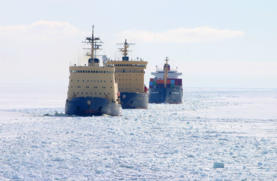 |
March 14, Climate Change Poses Arctic Challenge for U.S. Navy
Climate change will pose major new hurdles for U.S. naval forces, forcing the military to grapple with an emerging Arctic frontier, increasing demand for humanitarian aid and creating rising seas that could threaten low-lying bases, the National Academy of Sciences said yesterday.
|
March 14, New interpretation of Antarctic ice cores - Researchers at Alfred Wegener Institute expand prevailing theory on climate history
Climate researchers at the Alfred Wegener Institute for Polar and Marine Research in the Helmholtz Association (AWI) expand a prevalent theory regarding the development of ice ages. In the current issue of the journal Nature three physicists from AWI's working group "Dynamics of the Palaeoclimate" present new calculations on the connection between natural insolation and long-term changes in global climate activity. Up to now the presumption was that temperature fluctuations in Antarctica, which have been reconstructed for the last million years on the basis of ice cores, were triggered by the global effect of climate changes in the northern hemisphere. The new study shows, however, that major portions of the temperature fluctuations can be explained equally well by local climate changes in the southern hemisphere.
|
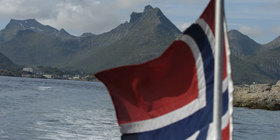 |
March 11, Yes or no to Lofoten oil?
The Norwegian government will this month present a revised management plan for the Barents Sea and the Lofoten waters. A “yes” to oil production in Lofoten could make the government coalition rupture.
|
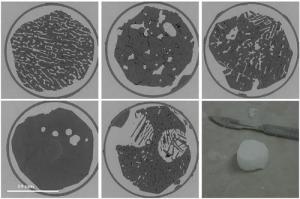 |
March 10, Sea Ice Holds Deep Secrets
Research scientist Sonke Maus has used funding under the Research Council's Programme on Synchrotron Research (SYNKROTRON) to develop a method of taking samples from polar ice without altering its extremely fragile microstructure. He has also laid the foundation for determining how molecular structure affects the mechanical properties of ice. This knowledge is vital for predicting the impact of ice on future activities in the Arctic Ocean.
|
March 10, Recovery Lakes, East Antarctica: Radar assessment of sub-glacial water extent
In 2007 four new large subglacial lakes were reported in the upper reaches of the Recovery ice stream, in Dronning Maud Land, East Antarctica. The collective extent of these lakes, whose existence was deduced from satellite data, would have put them among Antarctica’s largest, second only to Lake Vostok.
|
March 9, Russia to ratify maritime border pact with Norway within month - Lavrov
Russian lower house of parliament, the State Duma, will ratify a maritime border demarcation treaty with Norway within a month, Russian Foreign Monister, Sergei Lavrov said on Monday.
Last year Russia and Norway signed a deal to delimitate their maritime border in the Barents Sea and Arctic Ocean after 40 years of negotiations. |
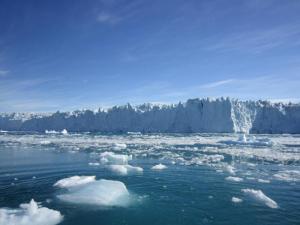 |
March 9, Melting Ice Sheets Now Largest Contributor to Sea Level Rise
The Greenland and Antarctic ice sheets are losing mass at an accelerating pace, according to a new NASA-funded satellite study. The findings of the study -- the longest to date of changes in polar ice sheet mass -- suggest these ice sheets are overtaking ice loss from Earth's mountain glaciers and ice caps to become the dominant contributor to global sea level rise, much sooner than model forecasts have predicted.
|
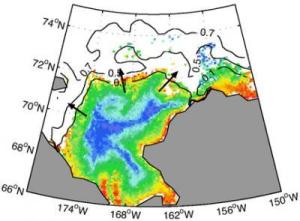 |
March 5, Observing Arctic Ice-Edge Plankton Blooms from Space
Ongoing climate-driven changes to the Arctic sea-ice could have a significant impact on the blooming of tiny planktonic plants (phytoplankton) with important implications for the Arctic ecosystem, according to new research conducted by scientists at the UK's National Oceanography Centre (NOC).
"Ice-edge phytoplankton blooms in the Arctic Ocean provide food for planktonic animals called zooplankton, which are in turn exploited by animals higher up the food chain such as fish," explained Dr Andrew Yool, one of the team of NOC researchers. |
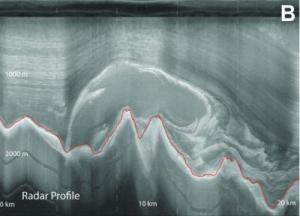 |
March 5 Some Antarctic Ice Is Forming from Bottom
Scientists working in the remotest part of Antarctica have discovered that liquid water locked deep under the continent's coat of ice regularly thaws and refreezes to the bottom, creating as much as half the thickness of the ice in places, and actively modifying its structure. The finding, which turns common perceptions of glacial formation upside down, could reshape scientists' understanding of how the ice sheet expands and moves, and how it might react to warming climate, they say.
|
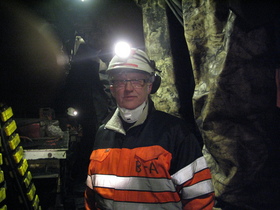 |
March 4, Mining investments on Svalbard
The world’s northernmost mining company Store Norske on the Arctic archipelago of Svalbard is upgrading one of its mines to secure coal production for another 20 years.
Store Norske’s board has decided to invest NOK 100 million (?13 million) in Mine 7. The money will be used for new equipment, a new storage for coal and new loading facilities, says Managing Director of Store Norske Bjorn Arnestad. |
March 4, Expedition cruise traffic around Svalbard
Report published by Akvaplan-Niva evaluates the effect of today`s cruise tourism on the environment around Svalbard.
The report, financed by the Svalbard Environmental Protection Fund, has been ordered by AECO (Association of Arctic Expedition Cruise Operators). The work focusses mainly on the marine environment, but emissions to air and consequences of landings have also been assessed.
The authors A. Evenset and G. N. Christensen conclude that environmental awareness among the ship`s personnel, the expedition teams and the tourists is very high. They also state, that operational emissions from today`s expedition cruise ships have a relatively minor impact on the environment, provided that laws and regulations are followed. |
March 3, Arctic Field Grant 2011
Arctic Field Grant remains a popular source of fieldwork funding for students and researchers based in Norway. We have received 61 applications for fieldwork, 1 was withdrawn and 59 were accepted. As many as 23 researchers and 37 students have secured funds for this years' field work in Svalbard. In total 2,8 mln NOK were distributed.
|
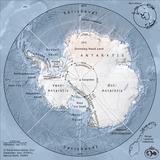 |
March 3, Violation of Antarctic regulations
The Norwegian Polar Institute, as the competent authority, has made a decision to formally report the expedition leader of the Berserk expedition to Norwegian prosecuting authorities for violation of the Antarctic regulations.
|
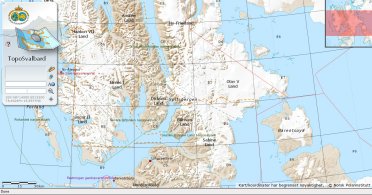 |
March 2, TopoSvalbard with new look
The Norwegian Polar Institute (NPI) has released a new version of the map portal TopoSvalbard.
The updated version has more functions than the previous one, giving the user the possbibility to plot coordinates and to measure the distance between chosen points. The base map is the same as in the previous version, but NPI is planning to improve the cartographic part of this map portal little by little. |
March 2, A New Vessel for the Arctic
A new kind of vessel is being specially designed to tolerate the tough, frigid conditions in the Arctic to allow for the repair and maintenance of sub sea installations...
|
March 1,Libyan turmoil puts focus on Arctic oil: Greenland
Unrest in the Middle East means the potential oil riches in Arctic areas like Greenland are more important than ever, the island's premier said on Wednesday, criticizing environmental groups that want to hamper exploration.
Greenland, which enjoys self-rule as part of the Kingdom of Denmark, has issued 20 licenses for oil and gas exploration in Baffin Bay on its West coast. |
March 1, Inspector General’s Review of Stolen Emails Confirms No Evidence of Wrong-Doing by NOAA Climate Scientists
At the request of U.S. Sen. Inhofe, the Department of Commerce Inspector General conducted an independent review of the emails stolen in November 2009 from the Climatic Research Unit (CRU) at the University of East Anglia in Norwich, England, and found no evidence of impropriety or reason to doubt NOAA’s handling of its climate data. The Inspector General was asked to look into how NOAA reacted to the leak and to determine if there was evidence of improper manipulation of data, failure to adhere to appropriate peer review procedures, or failure to comply with Information Quality Act and Freedom of Information Act guidelines.
|